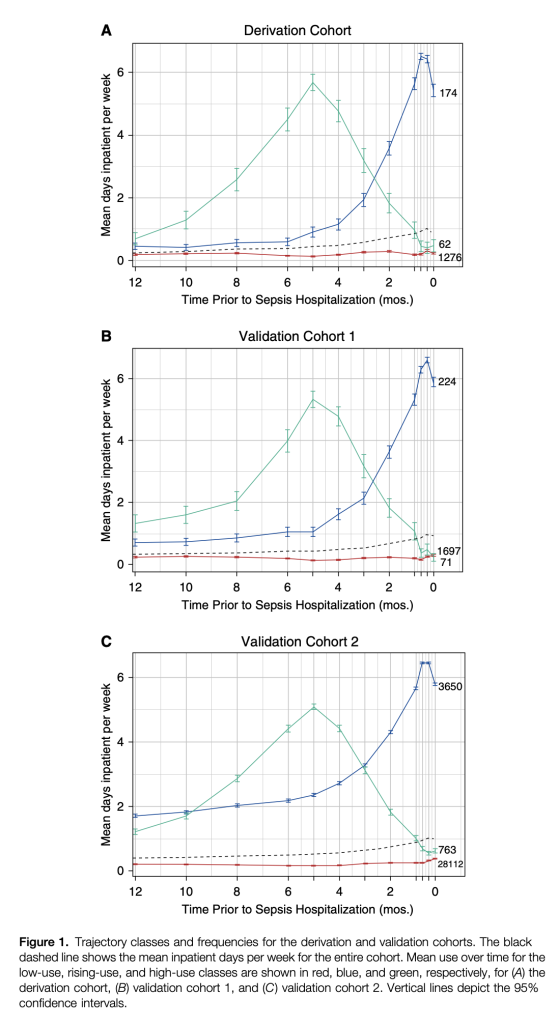 Richard Gonzalez
Richard Gonzalez
Center Director, Research Center for Group Dynamics, Institute for Social Research
Director, BioSocial Methods Collaborative, RCGD
Amos N Tversky Collegiate Professor, Psychology and Statistics, LSA
Professor of Marketing, Stephen M Ross School of Business
Professor of Integrative Systems and Design, College of Engineering
| E-mail: | Email Richard Gonzalez |
| Address: | Research Center for Group Dynamics Institute for Social Research University of Michigan 426 Thompson Street Ann Arbor, Michigan 48106 |
| Phone: | 734-647-6785 |
Describing hospital stay trajectories the year prior to sepsis
Prescott, H., Carmichael, A., Langa, K., Gonzalez, R., & Iwashyna, T. (2019). Paths into sepsis: Trajectories of presepsis healthcare use. Annals of the American Thoracic Society, 16, 116-123. doi:10.1513/AnnalsATS.201806-391OC PDF
Abstract
Rationale: Sepsis is a leading cause of death and disability whose heterogeneity is often cited as a key impediment to translational progress.
Objectives: To test the hypothesis that there are consequential and significant differences in sepsis outcomes that result from differences in a patient’s clinical course leading up to sepsis hospitalization.
Methods: We conducted an observational cohort study of U.S. Health and Retirement Study (HRS) participants in Medicare (1998–2012) and U.S. Department of Veterans Affairs beneficiaries (2009). Using latent profile analysis, we identified patient subtypes based on trajectory of presepsis healthcare facility use. Subtypes were identified in the derivation cohort (1,512 sepsis hospitalizations among earlier HRS participants), then validated them in two additional cohorts (1,992 sepsis hospitalizations among later HRS participants; 32,525 sepsis hospitalizations among U.S. Department of Veterans Affairs beneficiaries). We measured the association
tests and multivariable logistic regression.
Results: We identified three subtypes: low use of inpatient healthcare facilities, comprising 84% of the derivation cohort; rising use, 12%; and high use, 4%. The shape and distribution of presepsis trajectories were similar in all three cohorts. In the derivation cohort, 90-day mortality differed by presepsis trajectory as follows: 38% (low use), 63% (rising use), and 48% (high use) (P < 0.001). This association persisted in the validation cohorts (P < 0.001 for each). The rising use class remained an independent predictor of mortality after adjustment for potential confounders, including detailed physiologic data.
Conclusions: In national cohorts of patients with sepsis, we have shown that several distinct paths into sepsis exist. These paths, identified by trajectories of presepsis healthcare use, are predictive of 90-day mortality.



